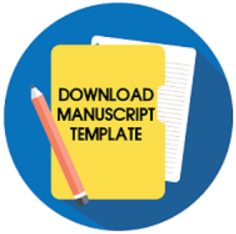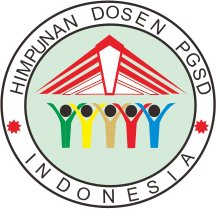The Effectiveness of E-Books in Learning: An Analysis of Trends in Elementary Schools
Downloads
Downloads
Achmad, W. K. S, & Utami, U. (2023). Sense-making of digital literacy for future education era: a systematic literature review. Jurnal Prima Edukasia, 11(1), 47-53. http://dx.doi.org/10.21831/jpe.v11i1.52911
Ambarwati, D., Herwin, H., & Dahalan, S. C. (2022). How elementary school teachers assess students' psychomotor during distance learning? Jurnal Prima Edukasia, 10(1), 58-65. https://doi.org/10.21831/jpe.v10i1.45040
Andaresta, N., & Rachmadiarti, F. (2021). Development of STEM-based e-Books on ecosystem materials to train students' science literacy skills. Berkala Ilmiah Pendidikan Biologi (BioEdu), 10(3), 635–646. https://doi.org/10.26740/bioedu.v10n3.p635-646
Aprilia, T., Ardiansyah, A. R., & Riyanti, H. (2023). The feasibility of interactive multimedia and online quiz based gamification on learning management system (LMS) thematic learning courses. Jurnal Prima Edukasia, 11 (1), 120-133. http://dx.doi.org/10.21831/jpe.v11i1.55533
Arrahim, A., & Oktavia, N. (2019). Efforts to increase interest and learning outcomes of class III students through the numbered heads together learning model in mathematics at Perwira II North Bekasi elementary school. DIDAKTIKA: Jurnal Pendidikan Sekolah Dasar, 1(1), 31–36. https://doi.org/10.21831/didaktika.v1i1.28084
Chang, T.-S., Teng, Y.-K., Chien, S.-Y., & Tzeng, Y.-L. (2021). Use of an interactive multimedia e-book to improve nursing students'' sexual harassment prevention knowledge, prevention strategies, coping behavior, and learning motivation: A randomized controlled study. Nurse Education Today, 105, 104883. https://doi.org/10.1016/j.nedt.2021.104883
Habibah, R., Salsabila, U. H., Lestari, W. M., Andaresta, O., & Yulianingsih, D. (2020). Utilization of learning media technology during the covid-19 pandemic. Trapsila: Jurnal Pendidikan Dasar, 2(2), 1–13. https://doi.org/10.30742/tpd.v2i2.1070
Hafid, H. A. (2011). Learning resources and media. Jurnal Sulesana, 6(2), 69–78.https://doi.org/10.24252/.v6i2.1403
Handayati, S. (2020). Development of e-book learning media by utilizing home learning features in science subjects. JIRA: Jurnal Inovasi Dan Riset Akademik, 1(4), 369–384. https://doi.org/10.47387/jira.v1i4.61
Hanikah, H., Faiz, A., Nurhabibah, P., & Wardani, M. A. (2022). Use of ebook-based interactive media in elementary schools. Jurnal Basicedu, 6(4), 7352–7359. https://doi.org/10.31004/basicedu.v6i4.3503
Hariyanta, D., Hermanto, H., & Herwin, H. (2022). Distance learning management in elementary schools during the pandemic. Jurnal Prima Edukasia, 10(2), 123–129. https://doi.org/10.21831/jpe.v10i2.47712
Hastuti, W. S., Pujiastuti, P., Tiarani, V. A., Nugroho, I. A., & Herwin, H. (2021). Higher-order thinking skills (hots) oriented learning development training for elementary school teachers. FOUNDASIA, 12(1), 29–36. https://doi.org/10.21831/foundasia.v12i1.36360
Herwin, H., & Dahalan, S. C. (2022). Technological integration factors in parental involvement during distance learning. International Journal of Information and Education Technology, 12(7), 637–642. https://doi.org/10.18178/ijiet.2022.12.7.1664
Herwin, H., Hastomo, A., Saptono, B., Ardiansyah, A. R., & Wibowo, S. E. (2021). How elementary school teachers organized online learning during the covid-19 pandemic? World Journal on Educational Technology: Current Issues, 13(3), 437–449. https://doi.org/10.18844/wjet.v13i3.5952
Herwin, H., Senen, A., Nurhayati, R., & Dahalan, S. C. (2022). Improving Student learning outcomes through mobile assessment: a trend analysis. International Journal of Information and Education Technology, 12(10), 1005–1011. https://doi.org/10.18178/ijiet.2022.12.10.1712
Hisbiyati, H., & Khusnah, L. (2017). Application of e-book media with the epub extension to increase middle school students' interest and learning outcomes in science subjects. Jurnal Pena Sains, 4(1), 16–21. https://doi.org/10.21107/jps.v4i1.2775
Imania, K. A., & Bariah, S. K. (2019). Design for development of online-based learning assessment instruments in science subjects. Jurnal Petik, 5(1), 31–47. https://doi.org/10.31980/jpetik.v5i1.445
Khikmawati, D. K., Alfian, R., Nugroho, A. A., Susilo, A., Rusnoto, & Cholifah, N. (2021). Utilization of e-books to increase learning interests of elementary school students in kudus. Buletin KKN Pendidikan, 3(1), 74–82. https://doi.org/10.23917/bkkndik.v3i1.14671
Kirana, R. W. C. (2020). Development of scientific approach-based trading company accounting practicum e-book teaching materials as an alternative learning source. Jurnal Pendidikan Akuntansi Indonesia, 18(1), 80–90. https://doi.org/10.21831/jpai.v18i1.32292
Mahardika, A. I., Saputra, N. A. B., Muda, A. A. A., Riduan, A., Lazuardi, N. S., & Nurmalinda. (2022). E-book digital learning media development training using flipbook pdf professional for teachers in Banjarmasin city. Kawanad : Jurnal Pengabdian Kepada Masyarakat, 1(2), 124–134. https://doi.org/10.56347/kjpkm.v1i2.59
Mentari, D., Sumpono, S., & Ruyani, A. (2018). Development of e-book learning media based on the results of 2-d electrophoresis research to measure students' creative thinking abilities. PENDIPA Journal of Science Education, 2(2), 131–134. https://doi.org/10.33369/pendipa.v2i2.4651
Ningrum, W. S., Herwin, H., & Dahalan, S. C. (2022). How do elementary school teachers integrate technology into social studies learning during the covid-19 pandemic? Jurnal Pendidikan Progresif, 12(1), 1–16. https://doi.org/10.23960/jpp.v12.i1.202201
Nurhayati, E. (2020). Increasing student activeness in online learning through quiziz educational game media during the prevention of the spread of covid-19. Jurnal Paedagogy, 7(3), 145–150. https://doi.org/10.33394/jp.v7i3.2645
Nurjanah, H., Rohmah, S. N., & Aeni, A. N. (2022). The use of ssd e-books as digital learning media to instill noble morals for elementary school students. BUDAI: Multidisciplinary Journal of Islamic Studies, 1(2), 109–118. https://doi.org/10.30659/budai.1.2.109-118
Puspita, E. I., Rustini, T., & Dewi, D. A. (2021). Design and build interactive flipbook e-book media on human interaction with the environment in elementary schools. Journal of Educational Learning and Innovation (ELIa), 1(2), 65–84. https://doi.org/10.46229/elia.v1i2.307
Putria, H., Maula, L. H., & Uswatun, D. A. (2020). Analysis of the learning process in the network (online) during the covid-19 pandemic in elementary school teachers. Jurnal Basicedu, 4(4), 861–870. https://doi.org/10.31004/basicedu.v4i4.460
Ralston, N. C., Smith, R., Naegele, Z., & Waggoner, J. (2019). Book creator. TESL-EJ, 23(1), 1–9.https://tesl-ej.org/wordpress/issues/volume23/ej90/
Ramadhan, F. H. Y., & Herwin, H. (2022). How do students implement e-learning during the covid-19 pandemic? AL-ISHLAH: Jurnal Pendidikan, 14(3), 3753–3762. https://doi.org/10.35445/alishlah.v14i3.1279
Retno Palupi, D. A., Eka Putri, K., & Amirul Mukmin, B. (2022). E-book development using the QR code-based book creator application on teaching materials for elementary school students.PTK: Jurnal Tindakan Kelas, 3(1), 78–90. https://doi.org/10.53624/ptk.v3i1.123
Rusdiana, N. P. M., & Wulandari, I. G. A. A. (2022). Interactive e-book on water cycle material in science learning to improve learning outcomes of class v elementary school students. MIMBAR PGSD Undiksha, 10(1), 54–63. https://doi.org/10.23887/jjpgsd.v10i1.45180
Sabtaningrum, F. E., Wiyokusumo, I., & Leksono, I. P. (2020). Multicultural-based integrated thematic e-book in SFH (school from home) activities. Jurnal Ilmiah Sekolah Dasar, 4(2), 153–162. https://doi.org/10.23887/jisd.v4i2.24796
Sackstein, S., Spark, L., & Jenkins, A. (2015). Are e-books effective tools for learning? reading speed and comprehension: ipad vs. paper.South African Journal of Education, 35(4), 1–14. https://doi.org/10.15700/saje.v35n4a1202
Sadikin, A., & Hamidah, A. (2020). Online learning in the midst of the covid-19 outbreak. BIODIK, 6(2), 214–224. https://doi.org/10.22437/bio.v6i2.9759
Simbolon, N. (2013). Faktor-Faktor yang Mempengaruhi Minat Belajar Peserta Didik. Jurnal Kajian Pendidikan Dan Pendidikan Dasar, 1(2), 14–19. https://doi.org/10.24114/esjpgsd.v1i2.1323
Staiger, J. (2012). How E-books Are Used. Reference & User Services Quarterly, 51(4), 355–365. https://doi.org/10.5860/rusq.51n4.355
Suprapto, E., Apriandi, D., & Pamungkas, I. P. (2019). Development of animation-based interactive e-books for vocational high school students. ANARGYA: Jurnal Ilmiah Pendidikan Matematika, 2(2), 124–130. https://doi.org/10.24176/anargya.v2i2.4089
Susilawati, T., & Rusdinal. (2022). Development of integrated thematic blended learning based e-book learning media in grade IV elementary schools. Jurnal Cakrawala Pendas, 8(2), 378–387. https://doi.org/10.31949/jcp.v8i2.2285
Triwahyuningtas, D., Setiawan, O. Y., & Mahmuda, N. E. (2022). E-module of cube and beam based on inquiry for five grade students of elementary school. Jurnal Prima Edukasia, 10(2), 138-148. https://doi.org/10.21831/jpe.v10i2.48194
Wu, T.-T., & Chen, A.-C. (2018). Combining e-books with mind mapping in a reciprocal teaching strategy for a classical Chinese course. Computers & Education, 116, 64–80. https://doi.org/10.1016/j.compedu.2017.08.012
The copyright of the received article shall be assigned to the journal as the publisher of the journal. The intended copyright includes the right to publish the article in various forms (including reprints). The journal maintains the publishing rights to the published articles.

Jurnal Prima Edukasia by http://journal.uny.ac.id/index.php/jpe/index is licensed under a Creative Commons Attribution-ShareAlike 4.0 International License.


























